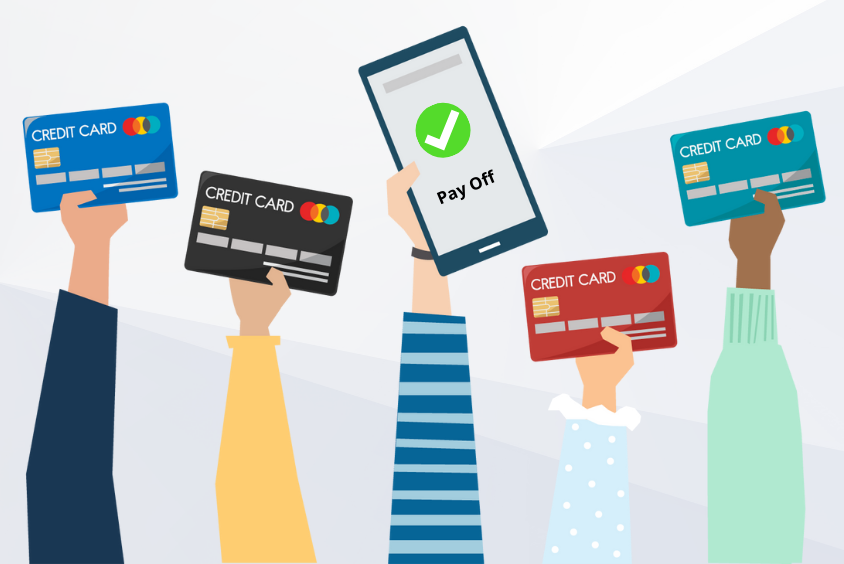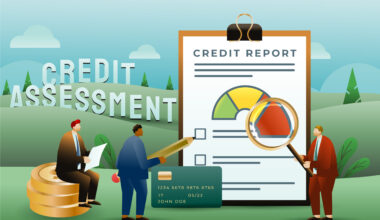Introduction

Carrying balances on multiple credit cards can feel like running a financial obstacle course—several bills, varying interest rates, overlapping due dates, and that constant stress of “will I make it this month?” If you have three credit cards (or more) and you’re ready to break free, you’re in the right place.
In this post, we’ll walk through how to pay off 3 credit cards simultaneously without wrecking your score. We’ll dig into the strategies, the risks, the habits that protect your credit, and how to create a realistic plan you can start this month. It’s written in a conversational tone—because we all deserve a clear, human-friendly roadmap when it comes to money.
Why it matters to pay off 3 credit cards simultaneously without wrecking your score
Before we dive into the “how,” let’s unpack why this matters. You might assume you should just focus on one card and worry about the rest later. But doing so without strategy can jeopardize your credit score or cost you more in interest. Here’s what you face:
- Interest builds fast: Multiple balances often mean varying APRs, and high-interest cards can snowball out of control if left unchecked. The article on strategies for paying off multiple cards highlights both the “snowball” and “avalanche” methods for this reason. (bairdwealth.com)
- Credit score risks: Your credit score is influenced by many factors—payment history, how much you owe relative to your credit limit (“utilisation ratio”), and number of accounts with balances. The Consumer Financial Protection Bureau notes that paying off balances can improve your score—but timing and how you pay matter. (consumerfinance.gov)
- Simultaneous payoff keeps momentum: Trying to stagger repayment without a clear plan can prolong stress and cost more. Paying down three cards at once (with strategy) helps you regain control and simplify your financial life.
So yes: you can aim to pay off three cards at the same time—and you should aim to do so in a way that doesn’t wreck your credit. Now let’s talk about how.
What Rich People Think About Money That Most Don’t 1.
H2: How to pay off 3 credit cards simultaneously without wrecking your score
Here’s the core section. We’ll break it into steps you can follow.
Step 1: Get your full picture
Start by gathering key information for each of your three cards:
- Current balance
- Interest rate (APR)
- Minimum monthly payment
- Credit limit (if a credit card)
- Due date
- Whether you’re near the credit limit (utilisation)
Also assess your monthly income, your monthly budget, essential expenses, and any other debt. Knowing exactly what you’re working with is crucial.
Step 2: Continue making all the minimum payments
This is non-negotiable: to not wreck your score, you must keep up with every minimum payment on all cards while you execute your plan. According to a consumer credit guide, consistent on-time payments are one of the most important factors for credit scores. (consumerfinance.gov) If you miss a payment, your score can drop and you’ll undo progress.
Step 3: Choose a method for allocating extra payments
You’ll have extra funds (from budget savings, side income, etc.) that you’ll allocate to paying down cards. Two commonly used methods:
- Avalanche method: Focus extra payments on the card with the highest interest rate first, while making minimum payments on the other two. This saves the most in interest. (bairdwealth.com)
- Snowball method: Focus extra payments on the card with the smallest balance first, payoff UX motivates you, then move to next smallest, etc. Also a valid approach. (bairdwealth.com)
Since you want to pay off three simultaneously, you might blend: Make minimums on all three, allocate extra to one (from whichever method you choose) until that’s down significantly, then allocate freed funds toward the remaining two, but keep paying the others a little more than minimum too.
Step 4: Protect your credit utilisation and score while you pay down
Here are habits to ensure you don’t wreck your score:
- Keep utilisation low – Try to keep the balance on each card well under 30% of its limit. If you’re paying down, still try not to let any one card get too close to its limit. (Better Money Habits)
- Avoid closing cards aggressively – After you pay a card off, don’t immediately close the account unless there’s a good reason. Closing can reduce your available credit and shorten your credit history, hurting score.
- Avoid new credit applications – While you’re focused on payoff, avoid opening new cards or loans. More inquiries and new accounts can temporarily hurt.
- Stick to your payment schedule – Late payments hurt both score and your interest cost.
- Monitor your credit report – Stay aware of what’s reported: balances, payments, credit limits.
Step 5: Adjust budget to free up extra payment funds
To generate extra money to attack the balances, you may need to:
- Reduce discretionary spending (streaming, dining out, luxury purchases) temporarily.
- Redirect windfalls (tax refund, bonus, gift) toward card payoff.
- Automate payments: set a fixed extra amount each paycheck.
- Avoid accumulating new credit card debt while you pay down the old.
Step 6: Create timeline and track progress
Set realistic but ambitious timeline. Example: if you pay an extra £150 (or equivalent in your local currency) across the three cards each month, how long will it take to pay off? Create a simple table:
| Card | Balance | APR | Minimum Payment | Extra Payment Allocation | Estimated Pay-Off Time |
|---|---|---|---|---|---|
| Card A | £2,000 | 18% | £60 | £90 | ~24 months |
| Card B | £3,500 | 22% | £105 | £75 | ~30 months |
| Card C | £5,000 | 15% | £125 | £50 | ~40 months |
(This is illustrative—adjust to your numbers.)
By tracking monthly you’ll see your balances shrink, your payment burden reduce, and your credit utilisation improve—boosting your score.
Comparison table: Simultaneous payoff vs Single card focus vs Ignoring strategy
| Approach | Pros | Cons |
|---|---|---|
| Simultaneous payoff (all 3) | Balanced progress, utilises momentum, protects score | Requires disciplined budgeting and extra funds |
| Single-card focus (one at a time) | Simplest, clear win when one is done | Other balances may still accrue interest and harm utilisation |
| Ignoring strategy (minimums only) | Least effort short-term | Highest cost, longest payoff time, risk to score |
This table helps you see why simultaneous payoff with strategy is often the best balanced approach.
Powerful Guide: Negotiate lower interest rate on personal loans UK 1.
Real-life example: Paying off three cards without wrecking score
Let’s imagine Alex, who has three credit cards:
- Card 1: £4,000 balance at 20% APR
- Card 2: £2,500 balance at 17% APR
- Card 3: £1,500 balance at 15% APR
Monthly minimums: £80 + £55 + £35 = £170
Alex commits to an extra £200 monthly toward payoff, total monthly payment £370. He chooses the avalanche method (highest APR first).
Month 1-36:
- Keep paying minimums on all cards
- Extra £200 goes to Card 1 until it’s paid (approx 24–30 months)
- Then extra shifts to Card 2, then to Card 3
He keeps utilisation low, avoids new accounts, monitors his credit report. Over ~4 years, all three cards are paid off. His credit score also improves significantly due to reduced utilisation and strong payment history.
This shows how you can pay off three cards at the same time (i.e., managing them simultaneously), instead of ignoring two while focusing on one.
Common pitfalls and how to avoid wrecking your score
Even with the best intentions, people slip up. Here are common errors and how to prevent them:
- Neglecting one card’s minimum: Missing even one minimum payment will hurt your score and cost in fees. Avoid at all costs.
- Over-using credit during payoff: If you keep spending on the cards you’re working to pay off, utilisation stays high—score suffers.
- Closing paid-off cards immediately: You may be tempted to shut them down, but that can hurt credit history and utilisation.
- Opening new cards/loans during payoff: It may look like “progress” but can temporarily reduce your score and increase debt burden.
- Ignoring other debt or expenses: Credit cards are part of your overall financial picture; forgetting that can derail the plan.
- No budget or backup plan: Life happens—job change, unexpected expense. If you don’t have a buffer, you may need to borrow again, nullifying payoff progress.
Why paying off three cards simultaneously is a smart move
Here’s the payoff (pun intended) for doing this well:
- You reduce total interest paid (especially with avalanche method)
- You simplify your finances (fewer payments, fewer debts)
- You improve your credit score (lower utilisation, consistent payments)
- You free up cash flow for savings, investments, or lifestyle improvement
- You build momentum and psychological “wins” (seeing balances drop across all cards)
In short: this strategy isn’t just about ending debts — it’s about improving your financial foundation.
Conclusion
If you’re juggling three credit cards with balances, you don’t have to wait or let them drag you down. With the right plan, you can pay off three credit cards simultaneously without wrecking your score—by understanding your debts, making all minimum payments on time, allocating extra payment in a strategic way, protecting your utilisation and credit history, and staying disciplined.
Here’s your action checklist to take right now: pay off 3 credit cards simultaneously
- Gather info on your three cards (balance, APR, minimums, limit)
- Make sure you have a budget that includes paying all minimums when due
- Choose your method (avalanche or snowball) and allocate a realistic extra amount each month
- Protect your score: keep utilisation low, don’t open new cards, don’t miss payments
- Track progress monthly and adjust as needed
Your future financial self will thank you. Because clearing those cards isn’t just about being debt-free—it’s about being financially stronger. Start today.




